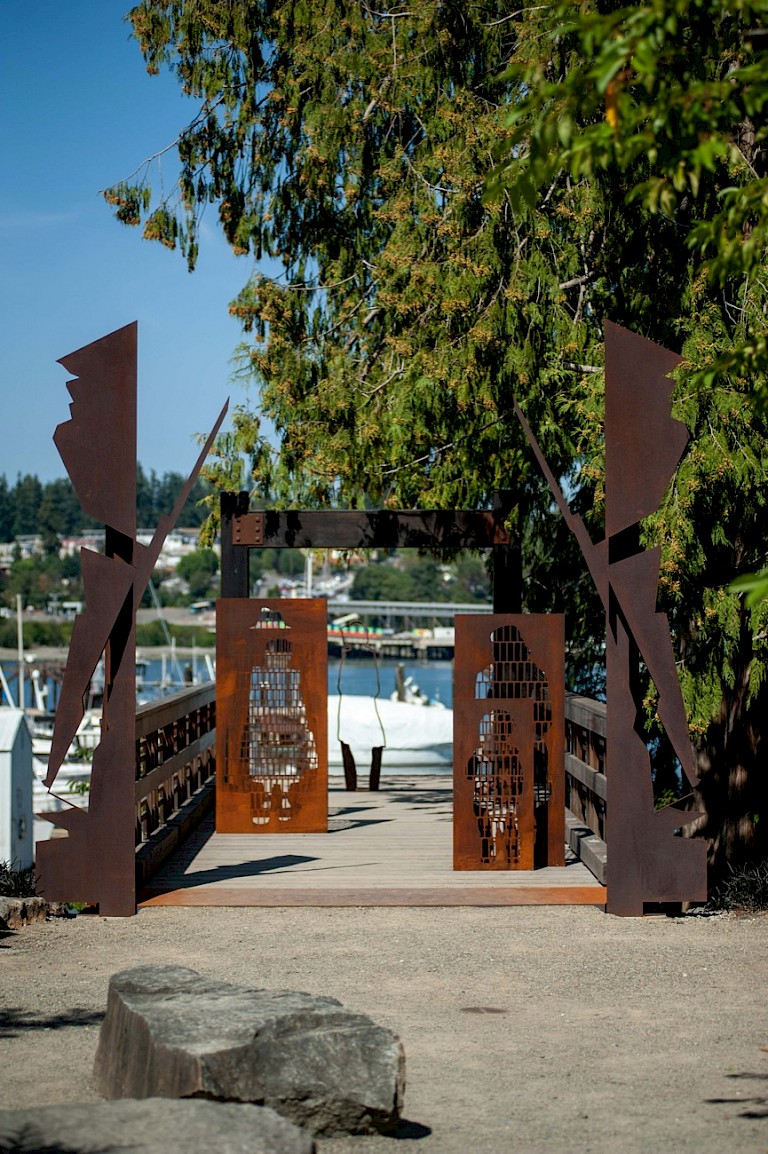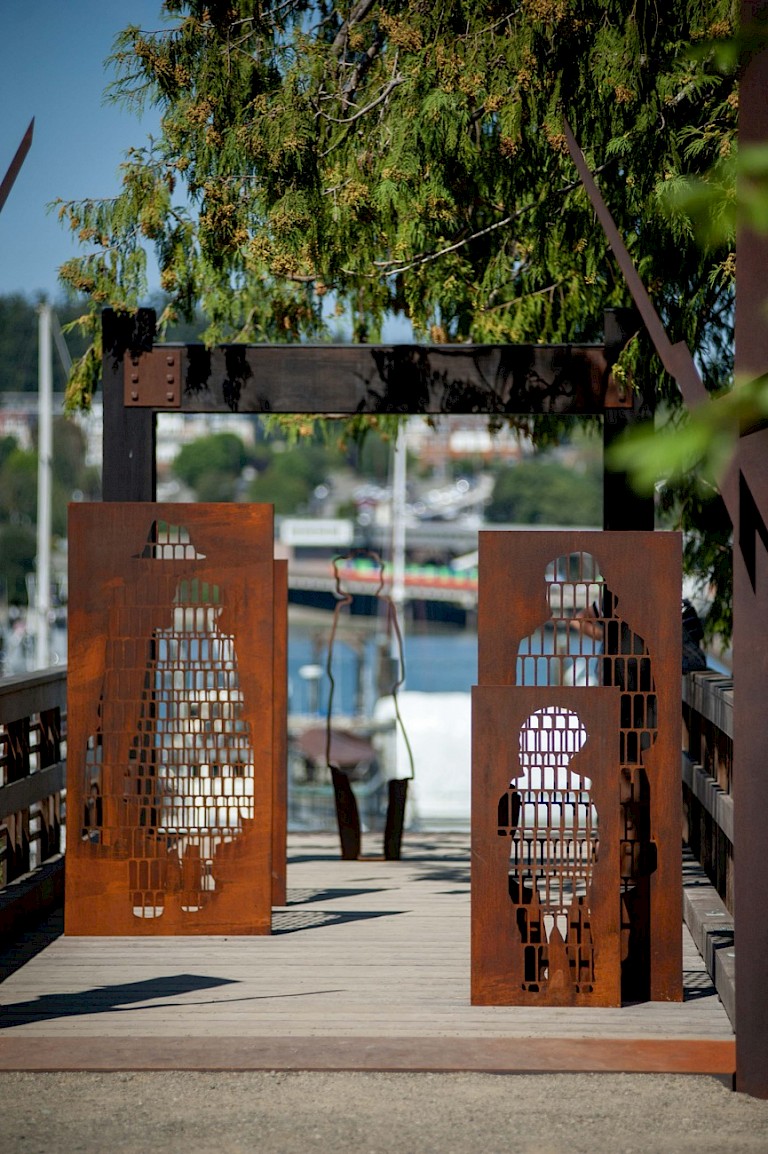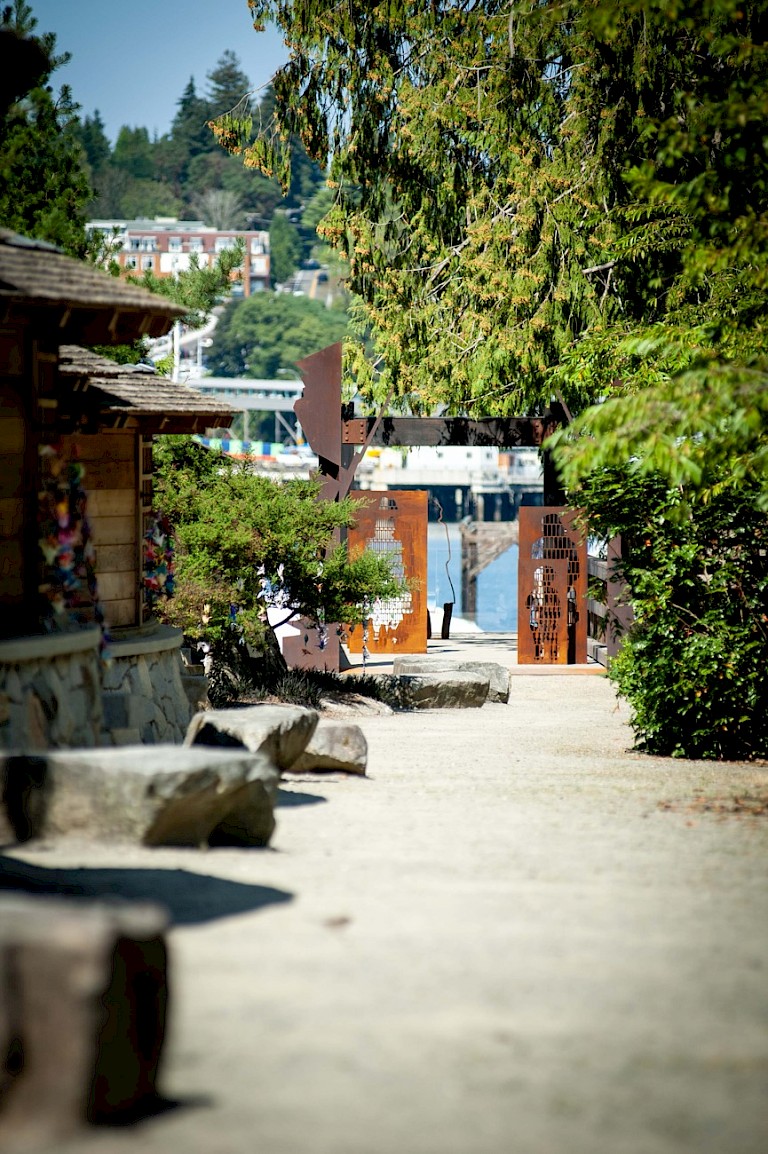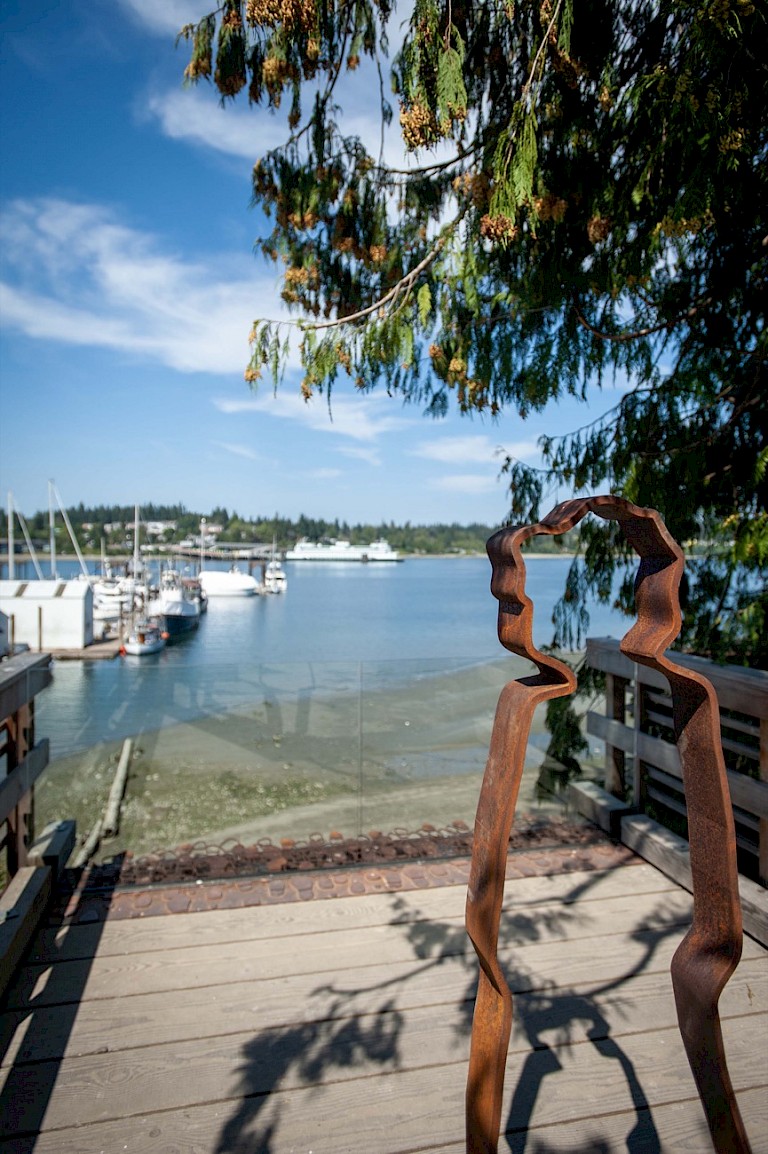



Located on the southern shore of the entrance to Eagle Harbor, the Wyckoff Company facility on Bainbridge Island was once one of the world’s largest creosote plants. Treated wood from the site was used for some of the 20th century’s most important infrastructure projects, including wharves in San Francisco, flood control channels in Los Angeles, and the Panama Canal. By 1987, however, environmental concerns resulted in the designation of the area as a top priority Superfund site, and the property came under the control of the Environmental Protection Agency.In July, 2001 Mayor Dwight Sutton appointed the Wyckoff Acquisition Task Force to recommend the best use of the property. After study, the Task Force delivered a “preferred alternative” to create a regional public park at the site and recommended the park be named after the late U.S. Representative Joel Pritchard, a summer resident of the Island.A Memorial to March 30, 1942At the same time, plans were being drawn up for the Bainbridge Island WWII Nikkei Exclusion Memorial—a collaboration between the Bainbridge Island/North Kitsap Interfaith Council and the Bainbridge Island Japanese American Community (BIJAC)—at the western edge of what would become Pritchard Park. A ceremony marking the 60th anniversary of the forced removal of Japanese Americans from Bainbridge Island took place March 30th, 2002 along Taylor Avenue, the site of the Eagledale Ferry Dock from which the removal took place. In August 2002, 95-year-old Fumiko Hayashida, the oldest survivor of the exclusion, testified before the U.S. Congress in support of a bill to direct the National Park Service to study the site for national memorial status.Two Themes: Healing and CommunityIn February 2003 the City Council officially endorsed the name of Pritchard Park. Friends of Pritchard Park, a group consisting of community members from the Task Force, the Bainbridge Island Land Trust, BIJAC and the Pritchard family, encouraged community fundraising for the $8MM purchase. The Island’s federal and state representatives assisted in obtaining grants, while representatives and staff from the City and Parks District worked hard to get state and local funds. During the campaign to raise funds a theme evolved that this would be a healing park—a healing for two wrongs in the past: one to the social fabric of the community and constitutional rights of citizens; the second to the contamination of the land itself.In May 2008, Congress voted to include the Memorial in the Minidoka National Historic Site as part of the Consolidated Natural Resources Act of 2008. The purchase of the lands for Pritchard Park and the Exclusion Memorial was made possible through the efforts of myriad members of the community working in collaboration with local, state, and federal government entities and private donors to secure funding and establish a safe and meaningful public resource. This grassroots effort, which has continued for 20 years of development at the Memorial, exemplifies the power of Community and the dedication to “Nidoto Nai Yoni” that makes the Exclusion Memorial such a special place.
The project's excellence lies in its ability to:1. Promote Awareness and Understanding: The installation offers a unique and powerful way to convey the emotions and experiences of Japanese Americans forcibly removed from their homes during World War II. By using abstract representations and symbols, it encourages viewers to reflect on the historical events, fostering empathy and a deeper understanding of the past.2. Foster Remembrance and Reflection: The project creates a space for remembrance and reflection on a crucial historical moment. By evoking emotions and providing a physical journey, it compels visitors to engage with the history of Japanese Americans' deportation, emphasizing the importance of remembering and learning from the past.3. Encourage Empathy and Prevention: By allowing visitors to imagine what those affected might have felt, the installation promotes empathy. It serves as a powerful reminder of the need to prevent such injustices from happening again, both within the local community and on a broader societal level.4. Artistic Excellence: The project's use of abstract representations, cyclical motifs, and symbolic numbers showcases artistic excellence. It effectively conveys complex emotions and historical themes through visually striking and thought-provoking designs.5. Cultural Connection: The project recognizes the cultural heritage and shared history of Japanese Americans on Bainbridge Island, creating a connection to the island's past and its residents.In terms of community impact, the project serves as a unifying force, bringing people together to remember and reflect on a shared history. It fosters a sense of community, empathy, and shared responsibility for preventing similar injustices. It can help create a more inclusive and informed community by engaging individuals in discussions about history, social justice, and human rights.Economically, while the project may not have a direct financial impact, it can indirectly contribute to the local economy by attracting visitors and tourists interested in its historical and artistic significance. This increased tourism can benefit local businesses and cultural institutions, supporting economic growth.Overall, the project's excellence is evident in its ability to evoke emotions, stimulate empathy, and create a space for remembrance and reflection. Its impact on the community is primarily social and cultural, contributing to a more inclusive and empathetic local society.




